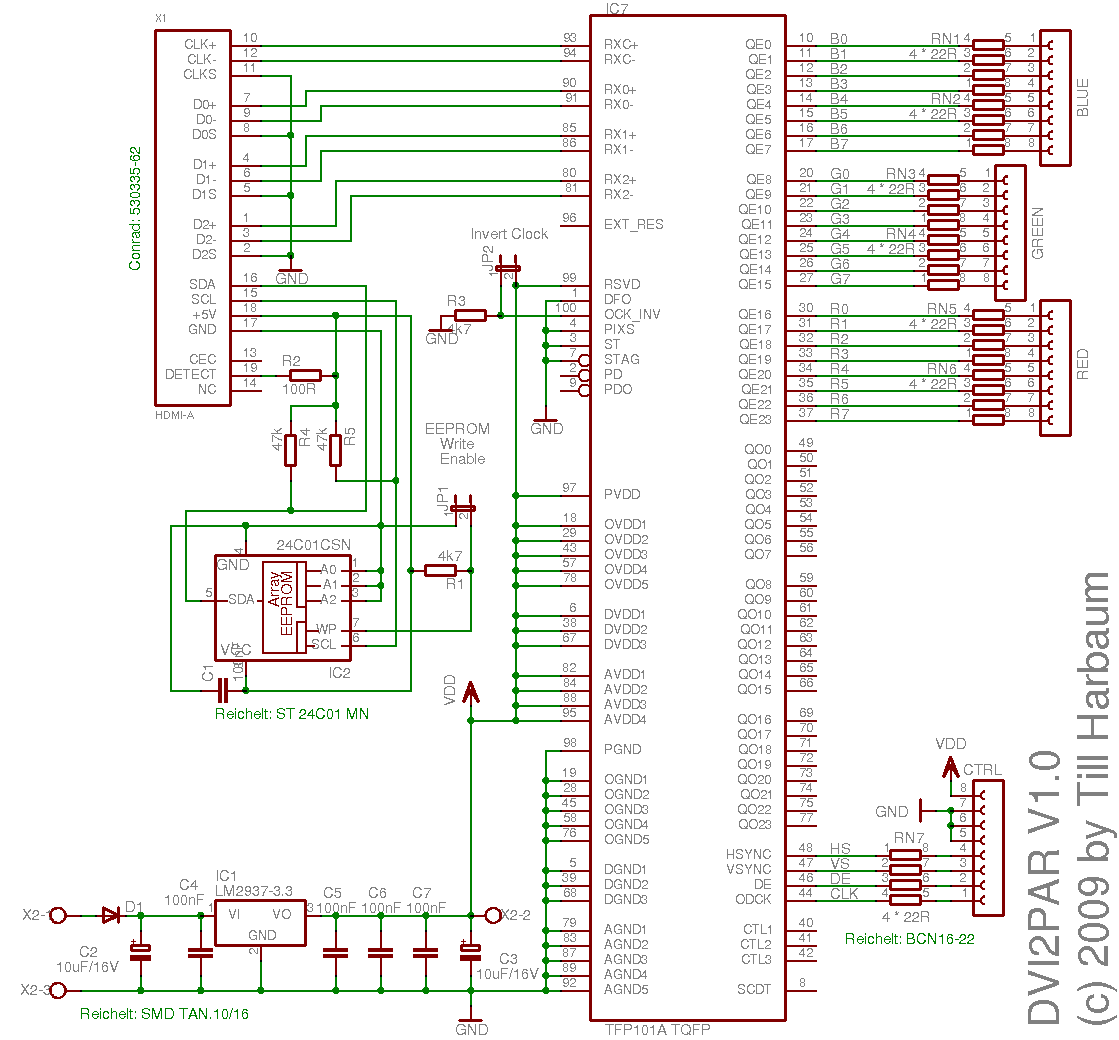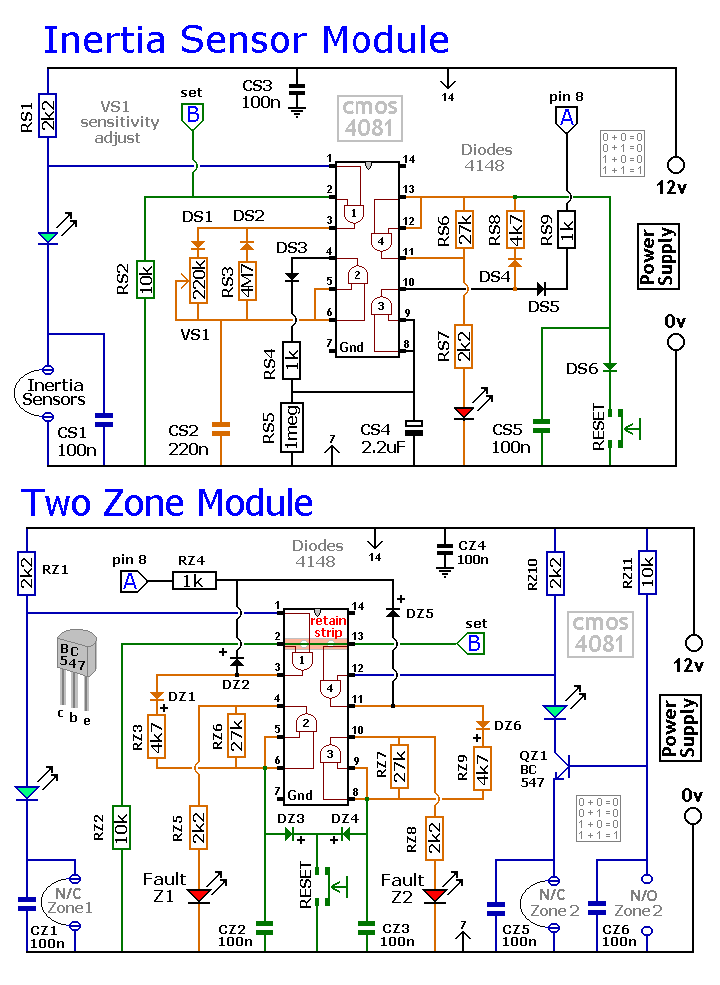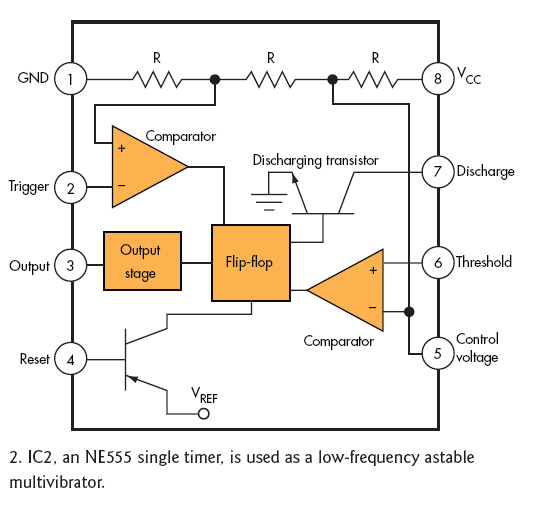
digital thermometer schematics

This digital thermometer circuit diagram utilizes a common 1N4148 diode as the temperature sensor. The diode's temperature coefficient of -2 mV/°C is leveraged to create an accurate electronic thermometer. A digital multimeter is employed to display the measured temperature, allowing for temperature readings from -9.99 °C up to +99.90 °C. To calibrate the minimum level (0 °C), the diode should be placed in a glass of water filled with crushed ice (after verifying the temperature with a standard thermometer). The user must wait until the thermometer indicates zero degrees Celsius and then adjust potentiometer P1 so that the digital voltmeter reads 000 when the diode senses zero degrees Celsius.
The digital thermometer circuit operates by measuring the voltage drop across the 1N4148 diode, which varies with temperature due to its negative temperature coefficient. As the temperature increases, the voltage drop across the diode decreases, allowing for a direct correlation between the voltage reading and the temperature. The circuit typically includes a power supply, the diode sensor, a resistor to limit current through the diode, and a digital multimeter configured to read voltage levels.
The calibration process is crucial for accuracy. By placing the diode in a controlled environment (ice water), the user can establish a reference point at 0 °C. The adjustment of potentiometer P1 ensures that the digital multimeter is properly calibrated to read zero volts when the diode is at this reference temperature. This setup allows for precise temperature measurements across the specified range, making it suitable for various applications where monitoring temperature is essential.
For practical implementation, the circuit should be designed with attention to component ratings and tolerances to ensure reliable operation. The 1N4148 diode should be chosen for its fast switching capabilities and low forward voltage drop, making it ideal for temperature sensing applications. Additionally, the digital multimeter should be capable of resolving small voltage changes to accurately reflect the temperature variations detected by the diode. Proper insulation and protection of the diode from environmental factors may also be necessary to maintain measurement fidelity.This digital thermometer circuit diagram uses a common 1N4148 diode as the temperature sensor. The temperature coefficient of the diode, -2 mV / 0C is exploited for this application to create an accurate electronic thermometer. To display the measured temperature, a digital multimeter is used and so we can measure temperature values from -9.
990C u p to +99. 90C. To set the minimum level (00C), place the diode in a glass of water filled with crushed ice (check the temperature first with a normal thermometer) wait until the thermometer shows zero degrees centigrade. Set P1 so that the digital voltmeter will display 000 when the diode senses zero degree centigade. 🔗 External reference
The digital thermometer circuit operates by measuring the voltage drop across the 1N4148 diode, which varies with temperature due to its negative temperature coefficient. As the temperature increases, the voltage drop across the diode decreases, allowing for a direct correlation between the voltage reading and the temperature. The circuit typically includes a power supply, the diode sensor, a resistor to limit current through the diode, and a digital multimeter configured to read voltage levels.
The calibration process is crucial for accuracy. By placing the diode in a controlled environment (ice water), the user can establish a reference point at 0 °C. The adjustment of potentiometer P1 ensures that the digital multimeter is properly calibrated to read zero volts when the diode is at this reference temperature. This setup allows for precise temperature measurements across the specified range, making it suitable for various applications where monitoring temperature is essential.
For practical implementation, the circuit should be designed with attention to component ratings and tolerances to ensure reliable operation. The 1N4148 diode should be chosen for its fast switching capabilities and low forward voltage drop, making it ideal for temperature sensing applications. Additionally, the digital multimeter should be capable of resolving small voltage changes to accurately reflect the temperature variations detected by the diode. Proper insulation and protection of the diode from environmental factors may also be necessary to maintain measurement fidelity.This digital thermometer circuit diagram uses a common 1N4148 diode as the temperature sensor. The temperature coefficient of the diode, -2 mV / 0C is exploited for this application to create an accurate electronic thermometer. To display the measured temperature, a digital multimeter is used and so we can measure temperature values from -9.
990C u p to +99. 90C. To set the minimum level (00C), place the diode in a glass of water filled with crushed ice (check the temperature first with a normal thermometer) wait until the thermometer shows zero degrees centigrade. Set P1 so that the digital voltmeter will display 000 when the diode senses zero degree centigade. 🔗 External reference





